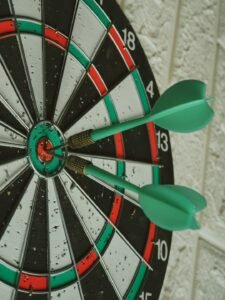Comprehensive Guide of Volleyball
Overview
Volleyball is a dynamic and engaging team sport that involves two teams, typically consisting of six players each, who compete to score points by hitting a ball over a net and into the opposing team’s court. The game is played on a rectangular court divided by a high net, and players use their hands and arms to volley the ball, aiming to prevent it from touching the ground on their side while trying to land it on the opponent’s side. Volleyball can be played both indoors and outdoors, with variations such as beach volleyball, which is played on sand. This sport promotes physical fitness, teamwork, and strategic thinking, making it a popular choice for recreational and competitive play alike.
History
The origins of volleyball can be traced back to 1895 when William G. Morgan, a physical education director in Holyoke, Massachusetts, created a game called ‘Mintonette’ as a blend of basketball, baseball, tennis, and handball. The name was later changed to volleyball due to the nature of the game, where players volley the ball back and forth. The sport quickly gained popularity, and in 1916, the first official rules were established. Volleyball was introduced to the Olympic Games in 1964, further solidifying its status as a global sport. Over the years, various adaptations and styles have emerged, including beach volleyball, which became an Olympic sport in 1996, showcasing the sport’s versatility and appeal.
Popularity and Demographics
Volleyball enjoys widespread popularity across the globe, with millions of players and fans participating in both recreational and competitive formats. According to the FIVB (Fédération Internationale de Volleyball), volleyball is played in over 220 countries, making it one of the most popular sports worldwide. The sport appeals to a diverse demographic, including both men and women, with many schools and universities offering volleyball programs. Beach volleyball, in particular, has seen a surge in popularity, especially in coastal regions and during summer months. Social media and online platforms have also contributed to the sport’s growth, allowing players to share their experiences and connect with others in the volleyball community. Additionally, grassroots initiatives and youth programs have been instrumental in introducing the sport to younger generations, fostering a love for volleyball from an early age.
Sponsored Hobbyists and Vendors
Become a Sponsor!
Affiliate Disclaimer: Throughout some sections below, Hobby Spotlight may suggest some tools, equipment or material using affiliate links. By purchasing any of those items, Hobby Spotlight may earn a small commission. This helps fund our website, content and services without directly charging our users.
Getting Started
Essential Volleyball Equipment:
Beginner
- Volleyball: Standard volleyball for recreational play.
- Volleyball Net: Adjustable volleyball net for backyard or beach use.
- Knee Pads: Protective knee pads for comfort and safety during play.
- Water Bottle: Durable water bottle to stay hydrated during games.
- Volleyball Pump: Hand pump for inflating volleyballs.
Intermediate
- Volleyball Shoes: Specialized shoes designed for indoor and outdoor volleyball.
- Training Volleyball: Weighted volleyball for improving strength and skills.
- Setting Target: Target tool for practicing setting accuracy.
- Resistance Bands: Bands for strength training and improving agility.
- Volleyball Backpack: Spacious backpack for carrying gear and personal items.
Basic Requirements and Initial Setup:
- Volleyball Net: A regulation volleyball net is essential for gameplay, typically set at a height of 7 feet 4 inches for women and 7 feet 11 inches for men.
- Volleyballs: A good quality volleyball is crucial. Official indoor volleyballs are typically made of leather or synthetic materials and weigh between 260-280 grams.
- Playing Surface: A flat, safe playing surface is necessary, whether it’s a gymnasium floor for indoor play or a sand court for beach volleyball.
Fundamental Skills to Learn:
- Serving: The act of putting the ball into play, which can be done underhand or overhand, requiring precision and power.
- Passing: Also known as bumping, this skill involves receiving the serve or attack and directing the ball to a teammate.
- Setting: A technique used to position the ball for an attacker, requiring quick reflexes and accurate hand placement.
- Attacking</: The action of hitting the ball over the net with force, aiming to score points by placing the ball in the opponent's court.
- Blocking: A defensive skill where players jump to intercept an opponent’s attack, preventing the ball from crossing the net.
Sub-Hobby/Common Activities:
- Beach Volleyball: Played on sand courts, this variation emphasizes agility and teamwork in a more casual setting.
- Indoor Volleyball: A competitive format played in gyms, focusing on strategy and skill development.
- Volleyball Drills: Practice routines designed to improve specific skills such as serving, passing, and attacking.
- Volleyball Tournaments: Competitive events where teams compete against each other, fostering community and sportsmanship.
- Coaching and Training: Involves teaching techniques and strategies to players of all levels, enhancing their skills and understanding of the game.
Terminology:
- Set: A tactical play where the ball is positioned for an attacker to hit.
- Libero: A specialized defensive player who cannot attack the ball above the net height and wears a different color jersey.
- Rotation: The clockwise movement of players on the court after winning the serve.
- Dig: A defensive move to prevent the ball from hitting the ground after an opponent’s attack.
- Spike: A powerful downward hit aimed at scoring points.
- Serve Receive: The formation and strategy used by the receiving team to handle the serve.
- Attack Line: A line that separates the front row from the back row, affecting player positioning during play.
- Timeout: A break in play called by a coach or team to strategize or rest.
- Point: A unit of scoring in volleyball, awarded when the opposing team fails to return the ball.
- Match: A series of sets played to determine the winner, typically played best out of five sets.
Advanced Topics and Specializations
Advanced Volleyball Equipment:
- Professional Volleyball Net System: A durable and adjustable volleyball net system suitable for competitive play, featuring high-quality materials for longevity.
- Volleyball Training Equipment Set: Includes resistance bands, agility ladders, and cones designed to enhance volleyball skills and overall athletic performance.
- High-Performance Volleyball Shoes: Specialized shoes designed for volleyball, offering superior grip, cushioning, and support for quick movements on the court.
- Volleyball Ball Pump with Pressure Gauge: A professional-grade pump that allows for precise inflation of volleyballs, ensuring optimal performance during play.
- Volleyball Training Aids: Includes tools like spike trainers and setting targets to improve specific skills and techniques in volleyball.
Advanced Projects and Achievements:
- Beach Volleyball Tournament Participation: Competing in local and regional beach volleyball tournaments, showcasing skills in a dynamic outdoor environment.
- Volleyball Coaching Certification: Obtaining certification to coach volleyball, demonstrating advanced knowledge of techniques, strategies, and player development.
- Setting Up a Community Volleyball League: Organizing and managing a community volleyball league to promote the sport and encourage participation among various age groups.
Advanced Techniques and Methods:
- Jump Serving: Mastering the jump serve technique to increase serve speed and difficulty for opponents, enhancing overall game strategy.
- Defensive Strategies: Implementing advanced defensive formations and techniques, such as the perimeter defense, to effectively counter opposing attacks.
- Video Analysis for Performance Improvement: Utilizing video analysis tools to review gameplay, identify areas for improvement, and refine techniques.
Specializations and Niche Areas:
- Beach Volleyball: Focusing on the unique skills and strategies required for outdoor play on sand, including teamwork and adaptability to weather conditions.
- Indoor Volleyball: Specializing in the rules, techniques, and strategies specific to indoor volleyball, including court positioning and rotations.
- Adaptive Volleyball: Promoting inclusivity by developing programs for individuals with disabilities, ensuring everyone can participate in the sport.
- Volleyball Fitness Training: Concentrating on strength and conditioning programs tailored for volleyball players to enhance performance and reduce injury risk.
- Youth Volleyball Development: Focusing on coaching and mentoring young players to build foundational skills and foster a love for the game.
Future Trends and Innovations:
- Increased use of technology for player performance tracking and analytics.
- Growing popularity of mixed-gender leagues and tournaments to promote inclusivity.
- Development of virtual reality training programs to enhance skills and game understanding.
- Emphasis on mental health and sports psychology in training regimens.
- Expansion of grassroots programs to introduce volleyball to underserved communities.
Technology Integrations:
- Wearable Fitness Trackers: Devices that monitor player performance metrics such as heart rate, movement patterns, and fatigue levels during training and matches.
- Mobile Apps for Training: Applications that provide drills, workout plans, and video tutorials to help players improve their skills on the go.
- Online Coaching Platforms: Websites that connect players with coaches for personalized training sessions and feedback.
- Social Media for Community Building: Utilizing platforms like Instagram and Facebook to share tips, highlight achievements, and foster a sense of community among volleyball enthusiasts.
- Video Analysis Software: Tools that allow players and coaches to analyze gameplay footage for strategic improvements and skill development.
Further Learning and Resources
Books:
- Volleyball Basics by David A. Tilley: An introductory guide that covers the fundamental skills, rules, and strategies of volleyball, ideal for newcomers to the sport.
- The Volleyball Drill Book by The American Volleyball Coaches Association: A comprehensive collection of drills designed to develop essential volleyball skills, suitable for players at the beginner level.
- Volleyball for Dummies by The National Alliance for Youth Sports: A friendly guide that explains the basics of volleyball, including techniques, rules, and tips for playing and coaching.
- The Art of Coaching Volleyball by The American Volleyball Coaches Association: An advanced resource for coaches that delves into strategies, techniques, and training methods to enhance team performance.
- Volleyball: Steps to Success by Amy P. Smith: This book provides advanced techniques and strategies for improving individual and team play, aimed at experienced players.
Websites:
- USA Volleyball, https://www.usavolleyball.org – The official governing body for volleyball in the United States, offering resources, news, and event information.
- Volleyball.com, https://www.volleyball.com – A comprehensive site for volleyball gear, training tips, and community forums.
- Volleyball Toolbox, https://www.volleyballtoolbox.net – Provides coaching resources, drills, and strategies for players and coaches at all levels.
- The Art of Coaching Volleyball, https://www.theartofcoachingvolleyball.com – Offers coaching education, drills, and videos to enhance coaching skills.
- VolleyCountry, https://www.volleycountry.com – A global volleyball community with news, forums, and resources for players and fans.
Courses:
- Volleyball Coaching Certification Course, https://www.usavolleyball.org/coaching-certification – A comprehensive course for aspiring volleyball coaches, covering fundamentals and advanced strategies.
- Skillshare Volleyball Training, https://www.skillshare.com/browse/volleyball – Offers various classes focusing on skills, drills, and techniques for players of all levels.
- Udemy Volleyball Courses, https://www.udemy.com/courses/search/?q=volleyball – A range of courses from beginner to advanced levels, covering skills, tactics, and fitness.
- Volleyball Training Academy, https://www.volleyballtrainingacademy.com – Provides online training programs and resources for players looking to improve their game.
- The Art of Coaching Volleyball Clinics, https://www.theartofcoachingvolleyball.com/clinics – Offers in-person and online clinics for coaches to enhance their skills and knowledge.
Content Creators and Community
Content Creators:
- Volleyball World (YouTube): A channel dedicated to showcasing the best moments in volleyball, featuring highlights, player interviews, and expert analysis from the world of volleyball.
- Volleyball Magazine (Instagram): A popular platform that shares the latest news, tips, and techniques in volleyball, along with stunning action shots and player features.
- Volleyball Training (TikTok): Focuses on quick training tips, drills, and techniques for players of all levels, making it easy to improve skills in a fun and engaging way.
Online Forums and Social Media Groups:
- Reddit – /r/volleyball: A community for volleyball enthusiasts to discuss techniques, share experiences, and seek advice.
- Facebook Volleyball Groups: Various groups where players and fans share tips, game highlights, and organize local matches.
- Volleyball Players Unite (Discord): An interactive platform for live discussions, training tips, and community support among volleyball players.
- Instagram Hashtags (#volleyball, #volleyballlife): Follow trending posts, techniques, and inspiring visuals from the volleyball community.
- Pinterest Boards: Discover training drills, workout routines, and volleyball-related inspiration curated by passionate players.
Local Clubs and Organizations:
- Community Volleyball Leagues: Many cities offer local leagues for players of all skill levels to join and compete.
- University Volleyball Clubs: Colleges often have clubs that welcome students to participate in recreational and competitive play.
- Youth Volleyball Programs: Local organizations that provide training and competition opportunities for young players.
- Beach Volleyball Associations: Groups that organize beach volleyball events and tournaments, promoting the sport in coastal areas.
- Meetup Groups: Platforms like Meetup.com host local volleyball gatherings for players to connect and play.
Events, Meetups, and Conventions:
- AVP Pro Beach Volleyball Tour: A premier series of beach volleyball tournaments featuring top athletes from around the world.
- Local Volleyball Tournaments: Regional competitions that encourage skill development and community engagement.
- Volleyball Coaching Clinics: Workshops where coaches share strategies and techniques to improve player performance.
- National Volleyball Championships: Major events that showcase the best teams and players in the country.
- Volleyball Conventions: Events that combine competitions, networking, and educational sessions for players and coaches.
Associated Hobbies
- Beach Volleyball: A popular variant of volleyball played on sand, often in a recreational or competitive setting. It emphasizes agility and teamwork, making it a fun way to enjoy the outdoors.
- Fitness Training: Many volleyball players engage in fitness training to improve their strength, agility, and endurance. This can include weightlifting, cardio workouts, and flexibility exercises.
- Coaching: Some enthusiasts take up coaching, sharing their knowledge and passion for the game with others. This can involve working with youth teams or adult leagues, fostering skills and teamwork.
- Refereeing: Becoming a volleyball referee can be a rewarding hobby, allowing individuals to stay involved in the sport while ensuring fair play and understanding the rules of the game.
- Volleyball Equipment Maintenance: Many players enjoy maintaining their volleyball gear, including cleaning and repairing balls, nets, and other equipment, ensuring everything is in top condition for play.
- Sports Photography: Capturing the action of volleyball games through photography can be a fulfilling hobby. This involves learning techniques to shoot fast-paced sports and documenting memorable moments.
- Volleyball Blogging or Vlogging: Sharing experiences, tips, and insights about volleyball through blogs or video content can be a creative outlet for enthusiasts, helping to build a community around the sport.
- Participating in Tournaments: Engaging in local or regional volleyball tournaments can enhance skills and provide a sense of community among players, fostering friendly competition and camaraderie.
Cost and Budgeting
Initial Investment and Ongoing Costs:
- Initial Investment: To start playing volleyball, the initial investment can be relatively low. A good quality volleyball typically costs between $20 and $50. If you are playing indoors, you may also need to invest in knee pads, which can range from $15 to $30. For outdoor play, a net system can cost between $50 and $150, depending on the quality and portability. If you choose to join a league or club, registration fees can vary from $50 to several hundred dollars.
- Ongoing Costs: Ongoing costs may include replacement volleyballs, which can be necessary if they become worn or damaged, costing around $20 to $50 each. If you participate in leagues, there may be additional fees for tournaments or travel. Additionally, if you play regularly, you might want to invest in new gear, such as shoes and apparel, which can add to your costs over time.
Budget-Friendly Options:
- Community Courts: Many parks and community centers have free volleyball courts available for public use, allowing you to play without any cost.
- Second-Hand Equipment: Look for used volleyballs and gear on platforms like Craigslist, Facebook Marketplace, or local thrift stores, where you can often find items at a reduced price.
- DIY Net Systems: If you’re playing outdoors, consider making your own volleyball net using inexpensive materials, which can save you money compared to purchasing a commercial net system.
Where to Buy:
- Sporting Goods Stores: Stores like Dick’s Sporting Goods and Academy Sports + Outdoors offer a variety of volleyballs and equipment, often with knowledgeable staff to assist you.
- Online Retailers: Websites like Amazon, VolleyballUSA, and Walmart provide a wide selection of volleyball gear, often at competitive prices, with the convenience of home delivery.
- Local Clubs and Leagues: Joining a local volleyball club or league can provide access to equipment sales or discounts on gear, as well as opportunities to connect with other players.
Money Making
How to Turn the Hobby into a Profession or Side Hustle:
- Volleyball Coach: Utilize your expertise in volleyball by becoming a coach for local schools, clubs, or recreational leagues. You can offer private lessons or group training sessions, helping players improve their skills and understanding of the game. This can be a rewarding way to share your passion while earning an income.
- Volleyball Referee: If you have a strong understanding of the rules and regulations of volleyball, consider becoming a certified referee. You can officiate local matches, tournaments, and leagues, earning money while being involved in the sport you love.
- Volleyball Equipment Sales: Start a business selling volleyball equipment, such as balls, nets, shoes, and apparel. You can create an online store or partner with local sports shops to provide quality gear to players and teams. Your knowledge of the sport can help you curate a selection that meets the needs of your customers.
- Volleyball Content Creator: Share your volleyball journey through social media platforms like YouTube, Instagram, or TikTok. Create engaging content that includes tutorials, match highlights, and tips for players. By building a following, you can monetize your content through sponsorships, affiliate marketing, and merchandise sales.
- Volleyball Camps and Clinics: Organize and run volleyball camps or clinics for different age groups and skill levels. This can be a great way to teach the fundamentals of the game, provide specialized training, and foster a love for volleyball in young athletes. You can charge a fee for participation and collaborate with schools or community centers for facilities.
Benefits and Enjoyment
Physical, Mental, and Social Benefits:
- Physical Fitness: Volleyball is an excellent way to improve overall physical fitness. It involves running, jumping, and quick lateral movements, which enhance cardiovascular health, strength, and agility. Regular play can lead to improved muscle tone and endurance.
- Mental Sharpness: The fast-paced nature of volleyball requires quick thinking and strategic planning. Players must constantly assess the game, anticipate opponents’ moves, and make split-second decisions, which can enhance cognitive function and mental agility.
- Social Interaction: Volleyball is inherently a team sport, fostering camaraderie and teamwork. Playing with others helps build friendships, improve communication skills, and create a sense of belonging within a community, whether in recreational leagues or competitive settings.
Success Stories and Inspirational Examples:
- Kerri Walsh Jennings: A three-time Olympic gold medalist and one of the most successful beach volleyball players in history, Kerri Walsh Jennings has inspired countless athletes with her dedication and achievements. Her journey from a young player to an Olympic champion showcases the potential of hard work and passion in volleyball.
- Gabrielle Reece: A former professional volleyball player and model, Gabrielle Reece has used her platform to promote fitness and wellness. Her success in both sports and media has made her an influential figure, encouraging others to pursue their passions in volleyball and beyond.
- Phil Dalhausser: Known for his impressive height and skill, Phil Dalhausser is a prominent figure in beach volleyball. His journey from a college player to an Olympic gold medalist exemplifies how dedication and perseverance can lead to success in the sport.
Ways to Enjoy and Grow in the Hobby:
- Join a Local League: Participating in a local volleyball league is a great way to meet new people and improve your skills. Many communities offer recreational leagues for various skill levels, providing a fun and competitive environment.
- Attend Clinics and Camps: Volleyball clinics and camps are excellent opportunities to learn from experienced coaches and players. These events often focus on skill development, teamwork, and game strategies, helping you to grow as a player.
- Practice Regularly: Consistent practice is key to improving your volleyball skills. Set aside time each week to work on specific techniques, such as serving, passing, and spiking, to enhance your overall performance on the court.
Challenges and Solutions
Common Challenges Faced by Hobbyists:
- Injury Risk: Volleyball is a physically demanding sport that can lead to injuries such as sprains, strains, and fractures. Players often face challenges related to overuse injuries, especially in the knees and shoulders.
- Access to Facilities: Finding a suitable place to play volleyball can be difficult, especially for those who do not have access to indoor courts or beach volleyball areas. This can limit practice opportunities and participation in games.
- Team Dynamics: Volleyball is a team sport, and conflicts or lack of communication among team members can hinder performance and enjoyment. Building a cohesive team can be challenging, especially in recreational leagues.
Tips for Overcoming These Challenges:
- Injury Prevention: Incorporate warm-up and cool-down routines into your practice sessions. Focus on strength training and flexibility exercises to reduce the risk of injuries.
- Seek Local Clubs: Join local volleyball clubs or community centers that offer access to courts and organized play. This can help you find regular practice opportunities and meet other enthusiasts.
- Foster Team Communication: Encourage open communication among team members. Regular team meetings or social events can help build trust and improve teamwork on the court.
Safety Considerations and Best Practices:
- Always wear appropriate footwear to provide support and traction on the court or sand.
- Stay hydrated before, during, and after play to maintain optimal performance and prevent heat-related illnesses.
- Be aware of your surroundings and ensure the playing area is free of obstacles or hazards that could lead to injury.
- Practice good sportsmanship by respecting opponents, teammates, and referees, fostering a positive playing environment.
- Follow the rules of the game and ensure all players understand the regulations to promote fair play and safety.
Conclusion and Encouragement
Recap of Key Points:
- Volleyball is a dynamic team sport that promotes physical fitness, coordination, and teamwork, making it an excellent choice for players of all ages.
- The game can be played both indoors and outdoors, with variations such as beach volleyball and indoor volleyball, allowing for diverse playing environments.
- Essential skills in volleyball include serving, passing, setting, attacking, blocking, and digging, each contributing to a well-rounded player.
- Volleyball fosters social connections, as it is often played in teams, encouraging communication and camaraderie among players.
- With regular practice and dedication, players can improve their skills, compete at various levels, and even pursue opportunities in recreational leagues or professional play.
Encouragement to Start and Enjoy Volleyball:
- Volleyball is an inclusive sport that welcomes players of all skill levels. Whether you’re a beginner or have some experience, you can easily find local clubs or community groups to join.
- Playing volleyball is a fantastic way to stay active and healthy. The combination of aerobic exercise and muscle engagement helps improve overall fitness while having fun.
- Engaging in volleyball can lead to lifelong friendships and a sense of belonging. The team aspect of the sport encourages collaboration and support, making it a great way to meet new people.
Final Tips and Motivational Thoughts:
- Focus on mastering the fundamental skills before moving on to advanced techniques. Consistent practice will lead to improvement and greater enjoyment of the game.
- Stay positive and embrace the learning process. Every player makes mistakes, and it’s important to view them as opportunities for growth rather than setbacks.
- Encourage others to join you in playing volleyball. Sharing your enthusiasm for the sport can inspire friends and family to participate, creating a supportive community around the game.

















